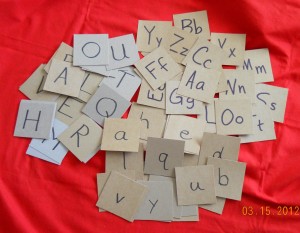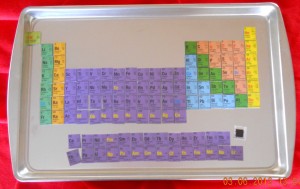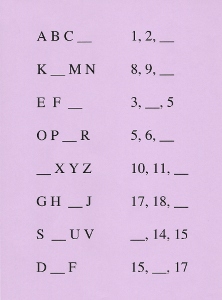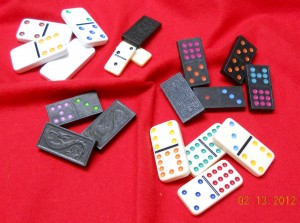Homeschooling does not have to mean exclusively house-schooling. When the weather is favorable, taking a lesson outdoors can revitalize learning, whether you take a nature walk around the neighborhood, sit on a blanket for read-aloud time, or do worksheets at the patio table.
When my kids were old enough and responsible enough to complete an assignment on their own, I rewarded them with the privilege of taking a lesson away from the school table and doing it elsewhere. Sometimes they took work to their bedrooms, but one location my daughter loved was her “reading ledge.” She had asked Dad to use a couple of extra boards to build a shelf in the corner of the fence in our backyard. It’s just the right size for a child to sit and read a while, nestled into the corner, listening to the birds and squirrels and the occasional car pulling up in the neighbor’s driveway. Notice that my husband also added a slim “step” board, about halfway between the ledge and the ground, for just the right amount of a boost to climb up onto the ledge.
For a few years, we had a tree-house in another part of the yard—more of a platform up in a tree, but there were a few boards attached to the trunk for steps, and it was high enough to give a lofty view of the neighboring yards. The kids would climb up there with a book to read or a math lesson to work on, and they were transported from just another homeschool day to the Swiss Family Robinson’s island.
Even a child who is not thrilled about reading can suddenly find it an enjoyable activity when it takes place in a unique environment: inside a tent, under a shady tree, in a make-shift clubhouse in the attic of the garage, or anywhere else out of the ordinary “school” locale. Whether reading for pleasure or reading an assigned passage in a textbook, whether writing a short essay or writing out math problems, taking the lesson outdoors can free the mind to think deeper thoughts and understand greater concepts just because the realm of ideas is not limited within four walls and a solid ceiling. The sounds of birds, leaves, wind, and other ambient noises can actually stimulate more thoughts than a quiet room. Yes, sometimes those thoughts may be slightly “off topic,” but that freedom is why we chose homeschooling in the first place. And there is always the bonus of new lesson ideas that come from time spent in nature: studying the busy-ness of an anthill, learning the names of all those parts of flowers, discovering that bees won’t notice anyone watching them while they work at collecting pollen from every blossom on an apple tree, focusing the sun’s rays through a magnifying glass to burn your initials into a piece of scrap wood, and seeing who can bite into the first stalk of spring rhubarb without puckering.
Ready for some learning style applications? A kinesthetic student may be more prone to reading when his surroundings require him to balance or brace himself against the tree limbs or fence corner or while swaying a swing. A tactile child may enjoy the feel of the grass on his fingers and toes, the leaves brushing against his face or between his fingers, or feeling the smooth rocks he chose to use as a bookmark or paperweight while reading his book in the breeze. The visual learner may appreciate reading his biology textbook in the tree-house because he can look around the neighborhood from his lofty perch and see if he can glimpse an elm, an eagle, or imagine he can see the photosynthesis of the sun on leaves as it happens. An auditory child may find that the songs of the birds help him to concentrate on his math problems because his ears aren’t busy wondering what his siblings are up to at the moment, or that the music from the radio of the neighbor working on his car will help to remind him of the correct formula when he needs to recall it later.
Homeschooling does not have to mean exclusively house-schooling, and life does not take place between the pages of a workbook. When the weather cooperates, take your homeschooling outside and meet life face to face.








 Guilt-Free Homeschooling is the creation of Carolyn Morrison and her daughter, Jennifer Leonhard. After serious disappointments with public school, Carolyn spent the next 11 years homeschooling her two children, from elementary to high school graduation and college admission. Refusing to force new homeschooling families to re-invent the wheel, Carolyn and Jennifer now share their encouragement, support, tips, and tricks, filling their blog with "all the answers we were looking for as a new-to-homeschooling family" and making this website a valuable resource for parents, not just a daily journal. Guilt-Free Homeschooling -- Equipping Parents for Homeschooling Success!
Guilt-Free Homeschooling is the creation of Carolyn Morrison and her daughter, Jennifer Leonhard. After serious disappointments with public school, Carolyn spent the next 11 years homeschooling her two children, from elementary to high school graduation and college admission. Refusing to force new homeschooling families to re-invent the wheel, Carolyn and Jennifer now share their encouragement, support, tips, and tricks, filling their blog with "all the answers we were looking for as a new-to-homeschooling family" and making this website a valuable resource for parents, not just a daily journal. Guilt-Free Homeschooling -- Equipping Parents for Homeschooling Success!

Recent Comments